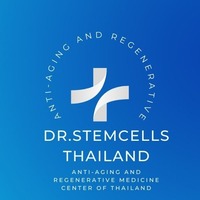Good Laboratory Practice (GLP)
Good Laboratory Practice (GLP) is a quality system that provides a framework for planning, performing, monitoring, recording, reporting, and archiving non-clinical health and environmental safety studies[1][3][8]. GLP ensures the quality, integrity,
Read More








![Good Laboratory Practice (GLP) is a quality system that provides a framework for planning, performing, monitoring, recording, reporting, and archiving non-clinical health and environmental safety studies[1][3][8]. GLP ensures the quality, integrity, reliability, and reproducibility of safety test data submitted to regulatory authorities for research or marketing permits of regulated products[2][3][6][7]. These products include pharmaceuticals, color additives, food additives, medical devices, and other non-pharmaceutical agents[6].](https://cdn.drstemcellsthailand.com/wp-content/uploads/2025/02/image-46.png)
![Good Manufacturing Practice (GMP) is a system designed to ensure that products, such as pharmaceuticals, food, cosmetics, and medical devices, are consistently produced and controlled according to established quality standards[1][2][3][4]. GMP guidelines cover all aspects of the manufacturing process, from raw materials, facilities, and equipment to the training of personnel and record-keeping[2][1]. By adhering to GMP standards, manufacturers can minimize the risks of contamination, mix-ups, deviations, failures, and errors, assuring the identity, strength, quality, and purity of their products[1][5][6].](https://cdn.drstemcellsthailand.com/wp-content/uploads/2025/02/image-44.png)

![Computed Tomography Angiography (CTA) is a non-invasive diagnostic imaging technique that combines computed tomography (CT) scanning with the injection of a contrast material to produce detailed, three-dimensional images of blood vessels and surrounding tissues[1][6]. This procedure is invaluable in the evaluation, diagnosis, and treatment planning of various vascular conditions throughout the body[1][2]. CTA can visualize arteries and veins to detect blockages, aneurysms (dilations of vessel walls), dissections (tearing of vessel walls), and stenosis (narrowing of vessels)[2].](https://cdn.drstemcellsthailand.com/wp-content/uploads/2025/02/image-41.png)


![A muscle biopsy is a diagnostic procedure that involves the removal of a small piece of muscle tissue for microscopic examination[3]. It is a valuable tool for diagnosing various neuromuscular disorders, including muscular dystrophy, inflammatory myopathies, metabolic myopathies, and other conditions affecting muscle function[6][4]. The choice of muscle for biopsy depends on the suspected condition and the location of symptoms, but common sites include the biceps (upper arm), deltoid (shoulder), or quadriceps (thigh)[4].](https://cdn.drstemcellsthailand.com/wp-content/uploads/2025/02/image-35.png)
![Phlebotomy, also known as venipuncture or blood draw, is the process of collecting blood from a vein, typically in the arm, for diagnostic testing or other medical purposes[1][4][7]. It is a critical skill performed by phlebotomists, nurses, medical lab scientists, and other healthcare workers[1][4].](https://cdn.drstemcellsthailand.com/wp-content/uploads/2025/02/image-31.png)
![In Thailand, "sanook" (fun) meets "sabai" (comfort) in a cultural embrace known as Thai hospitality, a tradition celebrated worldwide[3][2]. It's more than just a service; it's an art form woven into the very fabric of Thai culture, a genuine warmth and dedication to ensuring your well-being[3][4]. From the dazzling temples to the bustling street markets, a spirit of generosity and care permeates every interaction, making visitors feel instantly at home[3].](https://cdn.drstemcellsthailand.com/wp-content/uploads/2025/02/image-29.png)






